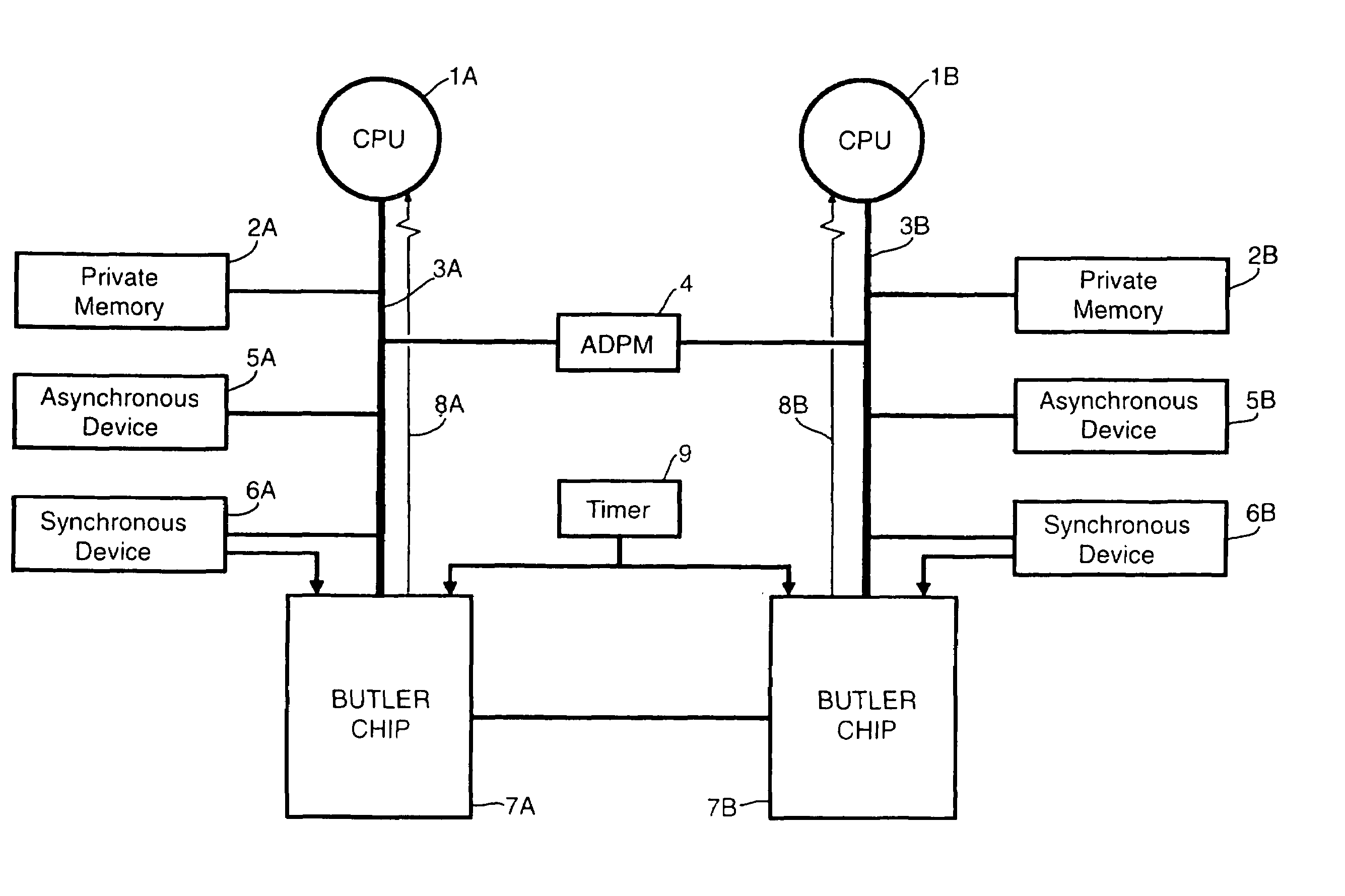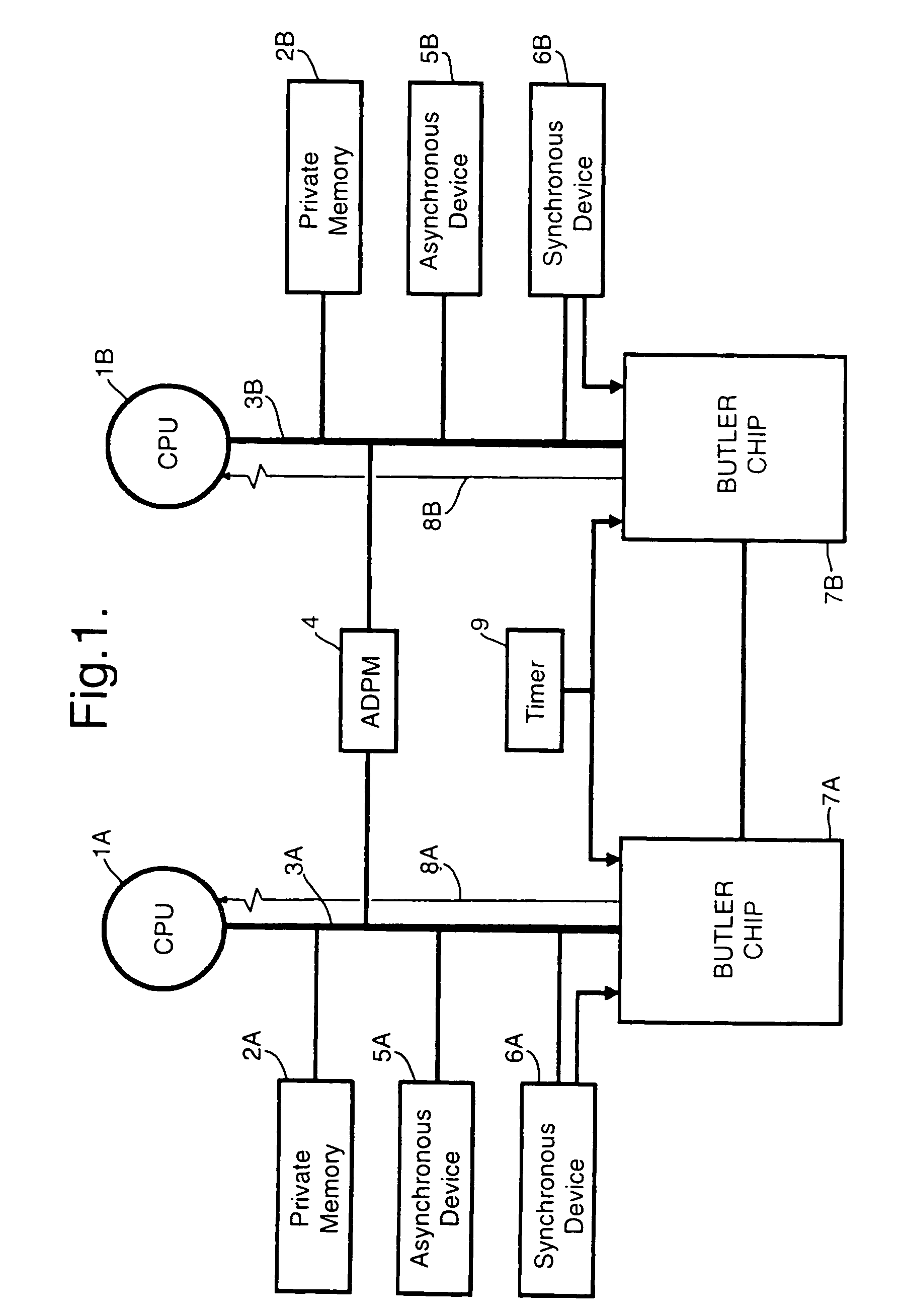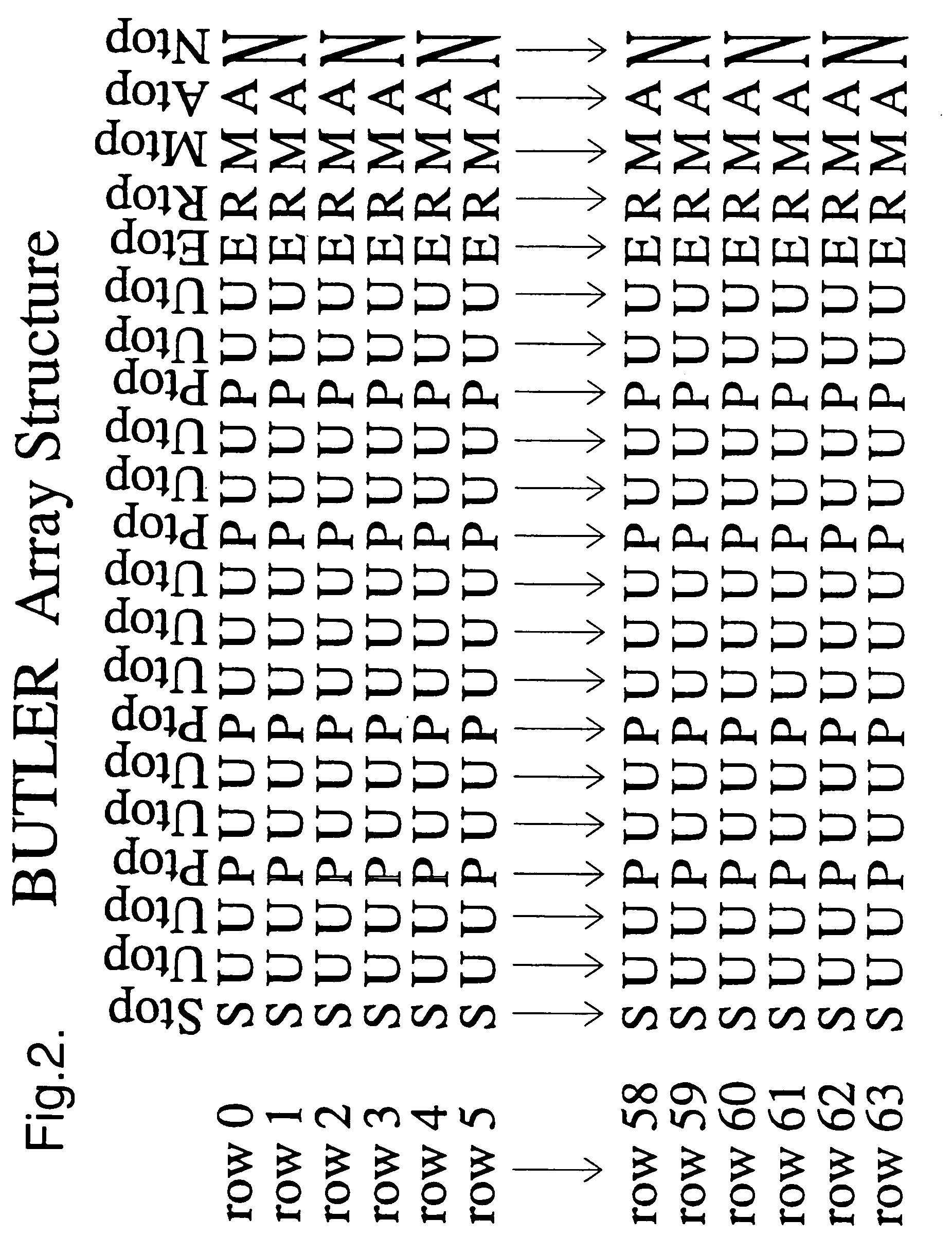Integrated circuits for multi-tasking support in single or multiple processor networks
a multi-tasking, integrated circuit technology, applied in the direction of program control, program initiation/switch, architecture with multiple processing units, etc., can solve problems such as temporal indeterminacy, and achieve the effect of efficient, temporally deterministic operation
- Summary
- Abstract
- Description
- Claims
- Application Information
AI Technical Summary
Benefits of technology
Problems solved by technology
Method used
Image
Examples
Embodiment Construction
[0028]In the example of a multiprocessor system, each processor has its own associated “Butler chip” and connections are made between “Butler chips”. A request for scheduling any task is always registered with a processor's own “Butler chip”. Where the task resides on a different processor, “Butler chips” communicate directly and schedule the relevant task on the destination processor when its turn arrives. This avoids the need to unnecessarily interrupt any task running on the destination processor, thereby providing an efficient, temporally deterministic operation.
BRIEF DESCRIPTION OF THE DRAWINGS
[0029]Some embodiments of the invention will now be described, by way of example only, with reference to the drawings of which:
[0030]FIG. 1 is a schematic circuit diagram illustrating the use of the “Butler chip” in accordance with the invention in a multiprocessor network;
[0031]FIG. 2 is a diagram showing the layout of the different types of tile which comprise a “Butler chip” array whic...
PUM
 Login to View More
Login to View More Abstract
Description
Claims
Application Information
 Login to View More
Login to View More - R&D
- Intellectual Property
- Life Sciences
- Materials
- Tech Scout
- Unparalleled Data Quality
- Higher Quality Content
- 60% Fewer Hallucinations
Browse by: Latest US Patents, China's latest patents, Technical Efficacy Thesaurus, Application Domain, Technology Topic, Popular Technical Reports.
© 2025 PatSnap. All rights reserved.Legal|Privacy policy|Modern Slavery Act Transparency Statement|Sitemap|About US| Contact US: help@patsnap.com



